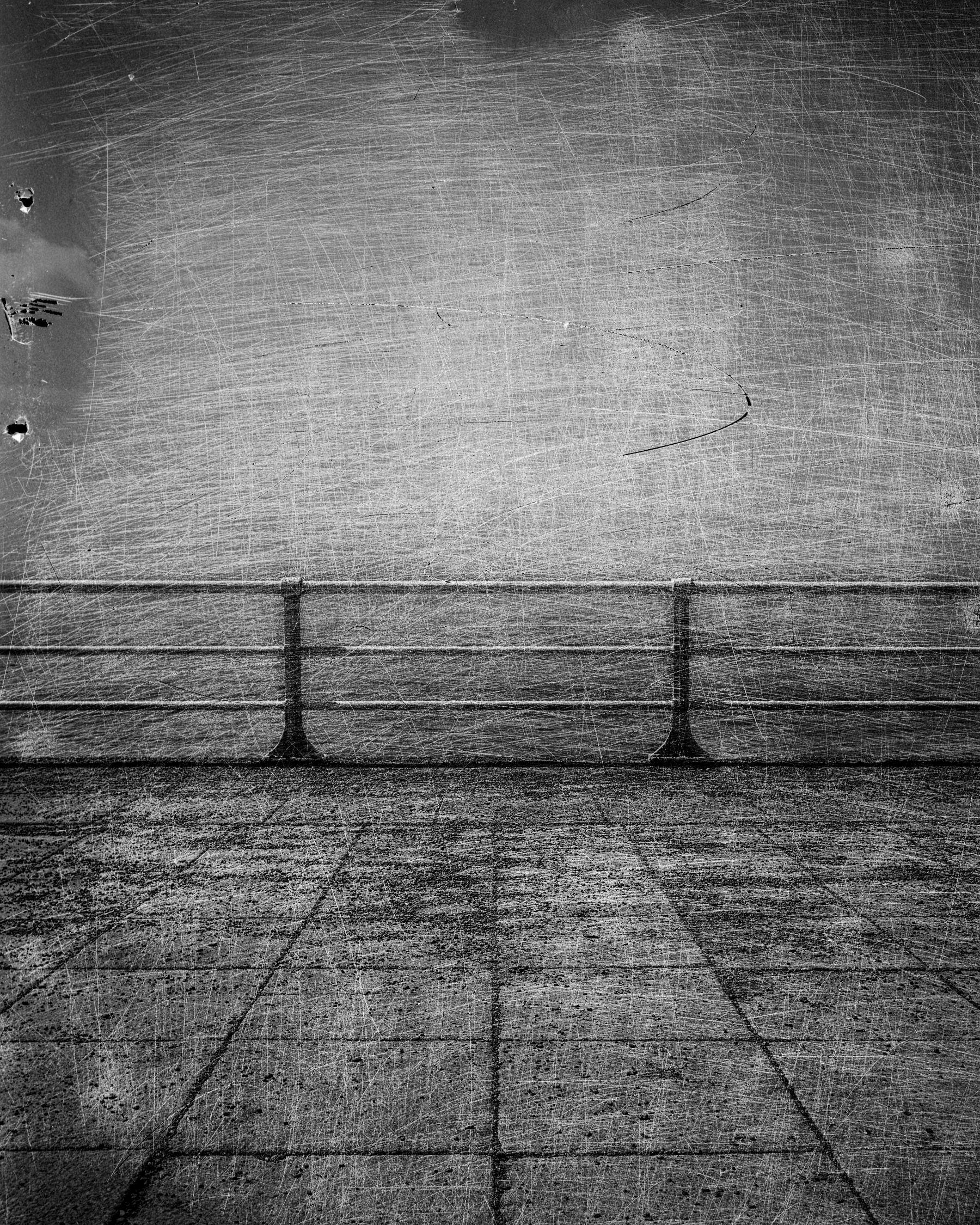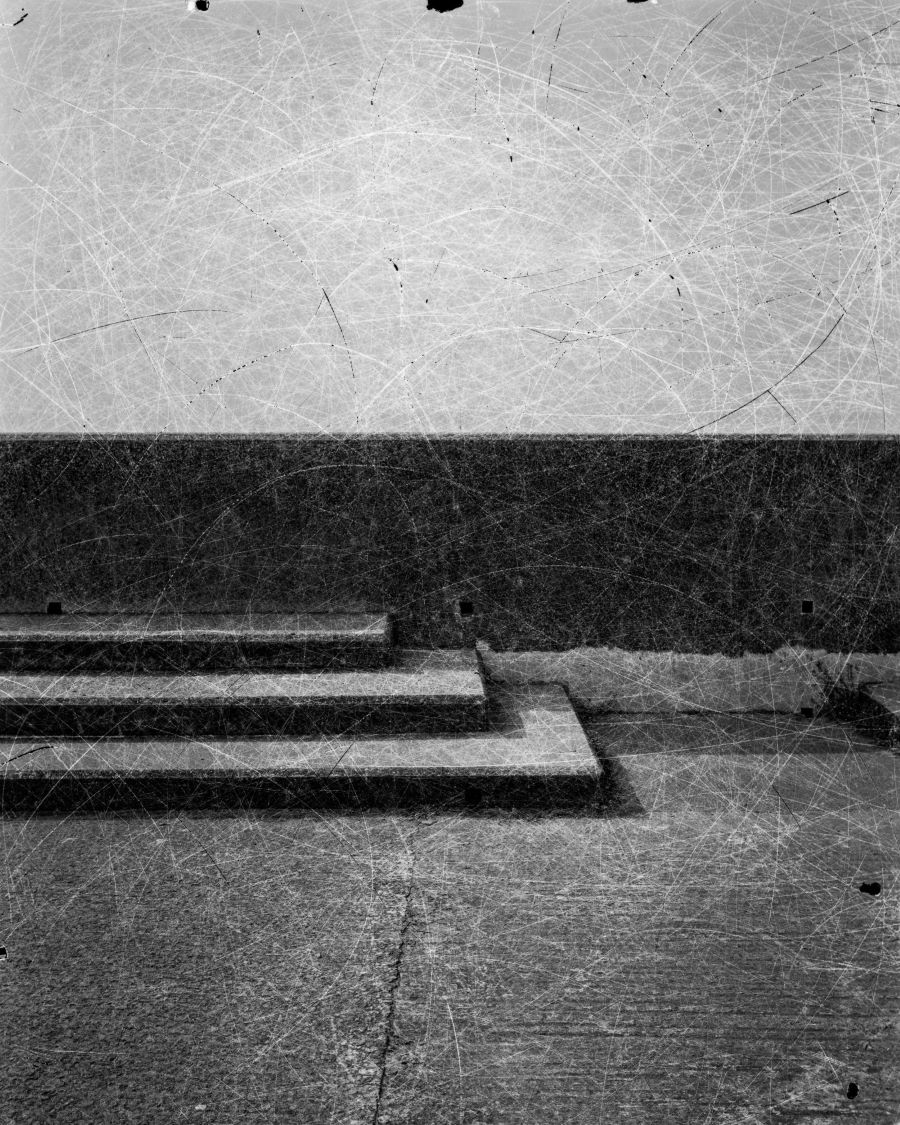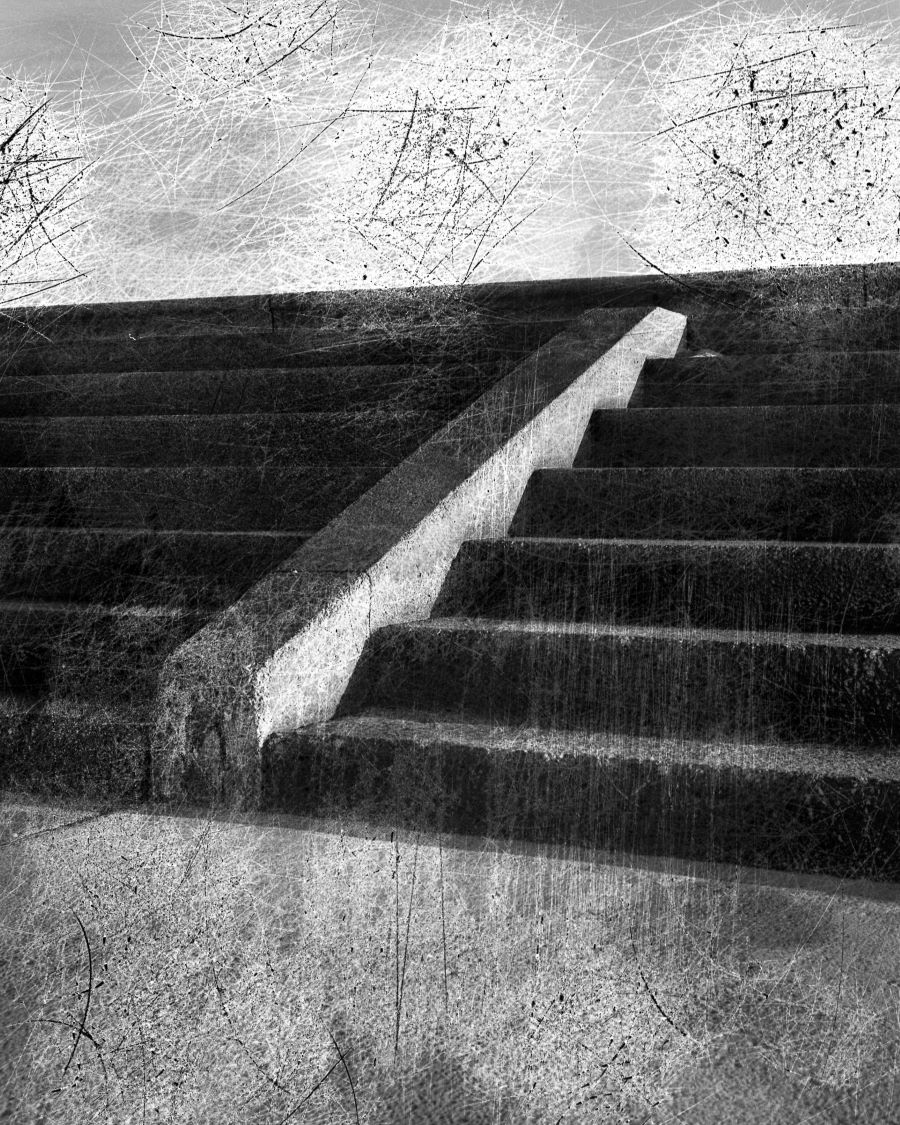How does the environment we shape mirror and affect us? How do we see, feel, and show places? How do we make them meaningful to us?
In his practice, Rolf starts with everyday elements of the environment and the properties of its materials to explore creative visual ideas.
This project focuses Rolf’s personal connection to promenades, sea walls and their artificial surfaces in Wales as part of our cultural landscape.

“The seaside is now important to me as a place of relaxation and contemplation, but it is not part of my memories from childhood or adolescence. I grew up in a landlocked country, and holidays by the seaside were unfamiliar to me. Without a biographical connection and free from nostalgia, I look at, examine and experience seaside locations differently and critically, leading to a unique take on seaside photography.”
In this analogue film project Rolf wanted to imprint the photographs with the essence of the scenes and environments they capture, marking the images with the textures of the artificial surfaces shown.

Using the physical nature of photographic film, he returned to the places he photographed, and scratched the developed negatives on the surfaces shown in the images. In this process of image - and mark-making, the film negative - often considered a mere intermediate and overlooked as an indexical part in the making of photographs - becomes a key element.
The scratches, made as spontaneous gestures, are driven by the subconscious as a creative force, mirroring or contrasting the lines, forms and shapes encountered on location. They add new traces on the film beyond those made by light. The marks of the external world - the thing photographed - and an imprint of my inner world while making work, blend into one image.
This process confronts the solidity of space, reimagines it, and is an intervention not in the environment itself but in its representation. It mediates my connection with the human-made environment, its components and materials, and uncovers emotional energy.

“The act of scratching the film negatives, inflicting destruction in order to create, shapes my relationship with the artwork: it requires letting go, taking risks, accepting the loss of images, and embracing chance with unpredictable results.”
The method used to scratch the film adds extra damage like holes and tears to the negatives which is retained in the final images to highlight that photographs are essentially representations, approximations, and mental constructs.
Ultimately, it is the viewers who interpret the images, which are spaces for them to project their own emotions and meanings. As Susan Sontag said: “Photographs… are inexhaustible invitations to deduction, speculation, and fantasy”.
Virtual Exhibition Tour